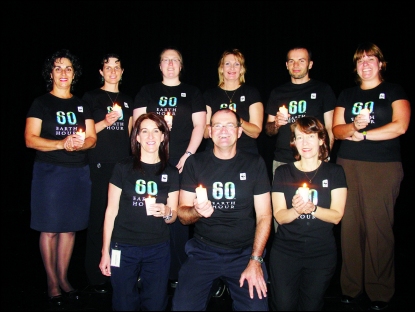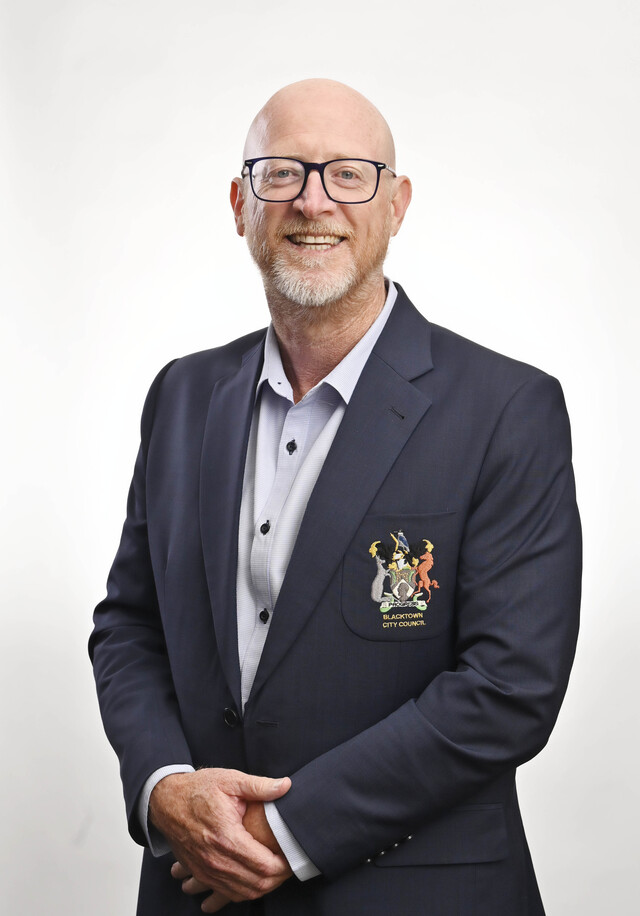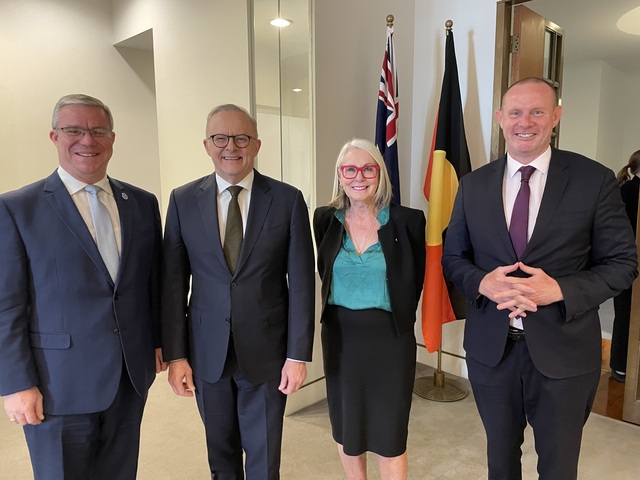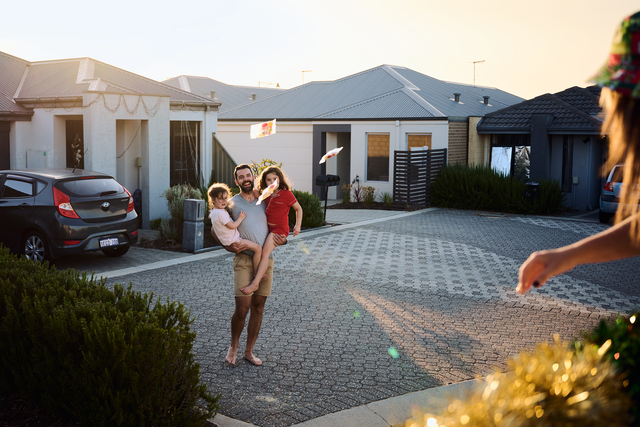Local Government a key player
Between 8pm and 9pm
on Saturday 29 March, every capital city in Australia, and many other localities, participated in Earth Hour, achieving at least a 1,000 megawatt reduction in energy use across the national grid.
By switching off any unnecessary lighting for the hour, participants had an impact equivalent to shutting down two large power stations.
Originating in Sydney in 2007, Earth Hour takes a stand against the greatest threat our planet has ever faced – climate change.
Last year, 2.2 million people and 2,100 Sydney businesses participated in Earth Hour, reducing Sydney’s energy consumption by 10.2 per cent for one hour. This simple act captured the hearts and minds of people all over the world. As a result, in 2008, 30 million people across some of the world’s major capital cities, including Copenhagen, Toronto, Chicago, Melbourne, Brisbane, Tel Aviv and Manila, united to take part in the event.
In Sydney, many families made their way down to the famous harbour foreshore to watch the city go dim, while others attended an Earth Hour beach party at Avalon Beach, featuring torchlights and an appreciation of the cause. Local icons powering down on the night included the Harbour Bridge, Sydney Opera House and Centrepoint Tower.
Sydney Lord Mayor, Clover Moore, said when WWF Australia proposed the first Earth Hour in 2007, the City of Sydney was an enthusiastic supporter.
“Earth Hour resonated strongly with our sustainability agenda,” she said. “We saw it as much more than a one off event, and much more than mere symbolism. We thought it offered a real opportunity to change people’s thinking and generate long term behaviour changes.”
Lord Mayor Moore said that while Australia recently ratified the Kyoto protocols, we have to work fast to catch up with the clever countries, which have long been preparing their strategies for global warming.
“It’s in our cities that the real changes must occur,” she said. “The City of Sydney is doing what we can. For example, we run the 3 CBDs program, in conjunction with North Sydney, Parramatta and the Department of Environment and Climate Change, to tackle the vast stock of existing commercial buildings by promoting better energy efficiency in commercial tenancy fitouts. This program is about to be rolled out in Australia’s other capital cities.”
Across the country, some 95 Councils participated in the Earth Hour event.
After discussions with Sydney Lord Mayor, Clover Moore, at the Council of Capital City Lord Mayors meeting in November 2007, Darwin Lord Mayor, Garry Lambert, committed Darwin City to this year’s Earth Hour. Council encouraged all Darwin residents and businesses to do likewise.
“Climate change is one of the most significant threats to life on Earth and one way to slow the current rate of global warming is to get each individual to make small adjustments to the way we live,” Lord Mayor Lambert said.
“As part of Darwin’s Environmental Management Plan and greenhouse emission reduction targets, all lights in Council facilities, except for car parks, are already turned off by timer switches after hours. So in effect Council practises Earth Hour every day.”
Manly City Council, which is bounded by Sydney Harbour and the Sydney Harbour National Park, also supported the event, hosting a free community celebration at Manly Cove. The celebration featured an upbeat drum and didgeridoo performance, which was complemented by exciting fire dancers.
Manly Mayor, Dr Peter Macdonald, said Earth Hour sends a powerful message that it is possible to take action on global warming by making a conscious lifetime effort to decrease energy use and our impact on the environment.
“It’s more than just an hour,” he said. “People should make the actions they take during Earth Hour part of their everyday lives. Turning lights and standby appliances off is an easy start to energy saving behavioural changes.”
Adelaide City Council aimed to save more than 20 tonnes of greenhouse gas emissions just by turning out lights. As well as switching off lights at the Town Hall and Victoria Square Fountain, Council encouraged restaurants and cafés to host candlelit dinners.
Adelaide Lord Mayor, Michael Harbison, also urged residents to follow his lead by uploading supporter films or photos to the Earth Hour website at www.earthhhour.org.au
Greater Shepparton City Council in Victoria encouraged its residents to take part, with all customer service representatives wearing Earth Hour t-shirts in the leadup to the event. Council turned out the lights, switched off computers and unplugged urns to save energy and the planet.
Council maximised its involvement in the event by also switching off computers and lighting, where it was safe, for an hour during business hours on Friday 28 March.
Meanwhile, in Western Australia, City of Melville residents were invited to appreciate renewable energy technology while enjoying a barbecue, listening to ambient live music and looking at the night sky through one of the many telescopes set up on the night. The free, Council funded event was held at the Piney Lakes Environmental Education Centre, with Council asking people to car pool or ride their bike to the event to further reduce greenhouse gas emissions.
For further information on Earth Hour and a full list of participants, visit www.earthhour.org.au








